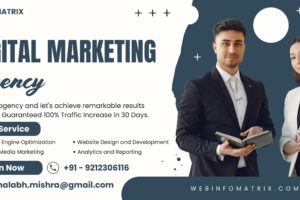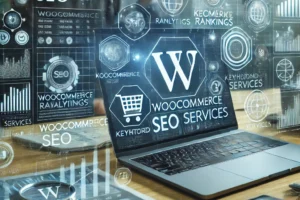In the ever-evolving world of digital marketing, visibility is everything. One of the fastest and most targeted ways to gain that visibility is through Pay-Per-Click (PPC) advertising. Whether you’re a small local business or a global brand, PPC offers a scalable, measurable, and highly effective method to reach the right people at the right time.
This article explores what PPC is, how it works, why it matters, and how businesses can harness it as a key pillar of their digital marketing strategy.
What Is Pay-Per-Click (PPC) Advertising?
PPC is a digital advertising model where advertisers pay a fee each time someone clicks on their ad. Unlike traditional advertising, where costs are often fixed regardless of results, PPC charges only for direct engagement — meaning you pay only when someone interacts with your ad.
Most PPC ads appear on search engines, websites, or social media platforms. The most well-known PPC platform is Google Ads (formerly Google AdWords), but similar models exist across Bing, YouTube, LinkedIn, Facebook, Instagram, and even eCommerce platforms.
How Does PPC Work?
At its core, PPC works through an auction system. Here’s a simplified breakdown:
- Keyword Selection: Advertisers choose keywords relevant to their business — for example, a London bakery might bid on “best cupcakes near me”.
- Ad Creation: A compelling ad is written, often including a headline, description, display URL, and call to action.
- Bidding: Advertisers set a maximum bid — the highest amount they’re willing to pay per click. However, the actual cost-per-click (CPC) may be lower depending on competition and quality.
- Ad Rank: The platform ranks ads based on a combination of bid amount, ad relevance, quality score (click-through rate, landing page experience, etc.), and expected impact of extensions or formats.
- Placement: Winning ads are shown in prominent positions — such as the top of a search results page or within a news feed — and the advertiser is charged each time someone clicks.
Key Components of a Successful PPC Campaign
To make the most of PPC advertising, it’s important to understand and optimise several core elements:
1. Keywords
These are the foundation of any search-based PPC campaign. Successful advertisers use a mix of high-intent, long-tail, and branded keywords to target different stages of the buyer journey. Keyword research ensures your ad is shown to people who are actively searching for your product or service.
2. Ad Copy
The quality of your ad copy has a huge impact on performance. It needs to be concise, persuasive, and aligned with what the user is searching for. A strong call to action and alignment with the landing page are essential.
3. Landing Pages
Where your ad takes users matters. Landing pages should be relevant, easy to navigate, and designed to convert — whether that means completing a purchase, filling out a form, or contacting your team.
4. Targeting Options
Beyond keywords, PPC platforms offer targeting based on location, demographics, device, time of day, interests, and more. Refining your targeting ensures your budget is spent on the most likely-to-convert audience.
5. Budget Management
You can set daily or monthly budgets, allocate spend across campaigns, and adjust based on performance. Smart budget management ensures you’re not overspending and helps maintain a positive return on investment (ROI).
6. Conversion Tracking
With proper tracking in place, you can monitor what happens after someone clicks — whether they make a purchase, book an appointment, or download a guide. This data is crucial for refining campaigns.
Why PPC Matters in Digital Marketing
PPC isn’t just about quick results — it plays a strategic role in a broader marketing plan. Here’s why it’s so valuable:
1. Immediate Results
Unlike SEO, which can take months to show results, PPC provides instant visibility. Once your ad is approved, it can start generating traffic within minutes.
2. High Intent Traffic
PPC targets people who are actively searching or browsing with intent. This means traffic from PPC often converts at a higher rate than organic sources.
3. Measurable Performance
Everything in PPC is trackable — from impressions and clicks to conversions and cost per acquisition (CPA). This makes it easy to gauge ROI and justify spend.
4. Budget Flexibility
You can start small and scale as needed. PPC allows businesses of all sizes to compete on a level playing field, especially when campaigns are well optimised.
5. Brand Visibility
Even if users don’t click your ad, they see your brand at the top of the page. Over time, this builds brand awareness and familiarity — which often leads to higher click-through and conversion rates in future interactions.
Common Types of PPC Campaigns
PPC is a broad field, and there are several different campaign types, depending on the platform and your goals:
Search Ads
These appear on search engine results pages (SERPs) when users type specific keywords. They are text-based and highly intent-driven.
Display Ads
These are visual ads (banners, images, etc.) that appear across websites in a network. They’re ideal for building brand awareness or retargeting previous visitors.
Shopping Ads
Used primarily by retailers, these show product images, prices, and descriptions directly in search results.
Video Ads
Commonly run on video platforms like YouTube, these can be skippable or non-skippable and help drive awareness and engagement.
Social Media Ads
These include promoted posts or stories on platforms like Facebook, Instagram, and LinkedIn. They offer highly refined audience targeting.
Challenges of PPC and How to Overcome Them
While PPC is powerful, it’s not without its challenges:
1. Click Fraud
This occurs when bots or competitors repeatedly click your ads to drain your budget. Using filters, IP exclusions, and click fraud monitoring tools can help reduce risk.
2. High Competition
In saturated markets, bidding wars can drive up costs. Focusing on long-tail keywords and niche audiences can help you compete effectively.
3. Poor Conversion Rates
If clicks don’t turn into sales, your ROI suffers. A/B testing ad copy, improving landing pages, and refining targeting can improve conversions.
4. Constant Monitoring
PPC isn’t a “set and forget” channel. It requires regular monitoring, testing, and optimisation to stay effective. Many businesses work with professionals or agencies for this reason.
The Role of PPC in a Broader Marketing Strategy
PPC doesn’t operate in a vacuum. It complements other digital marketing efforts:
- SEO and PPC: While SEO builds long-term traffic, PPC fills the gap with instant visibility.
- Content Marketing: Use PPC to drive traffic to high-value content like eBooks or webinars.
- Email Marketing: Retargeting through PPC can reconnect with users who opened emails but didn’t convert.
- Social Media: Paid campaigns help amplify organic social efforts and test messaging.
When integrated thoughtfully, PPC becomes a vital component of a full-funnel digital marketing strategy — guiding potential customers from awareness to action.
Final Thoughts
Pay-Per-Click advertising is one of the most efficient, flexible, and measurable forms of digital marketing available today. It provides instant access to potential customers, laser-focused targeting, and tangible results — all while allowing for precise budget control.
However, success in PPC depends on careful planning, consistent monitoring, and a deep understanding of both the platforms and your audience. Whether handled in-house or through a digital marketing partner, well-executed PPC campaigns can drive significant business growth, brand visibility, and competitive advantage.
In a crowded digital space, PPC helps ensure your business doesn’t just get seen — it gets chosen. Visit for more:https://code-desk.com/services/top-digital-marketing-agency-uk/



